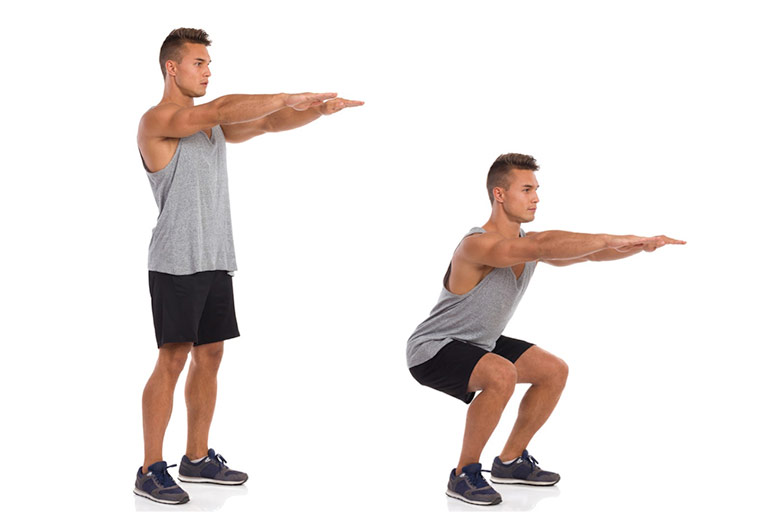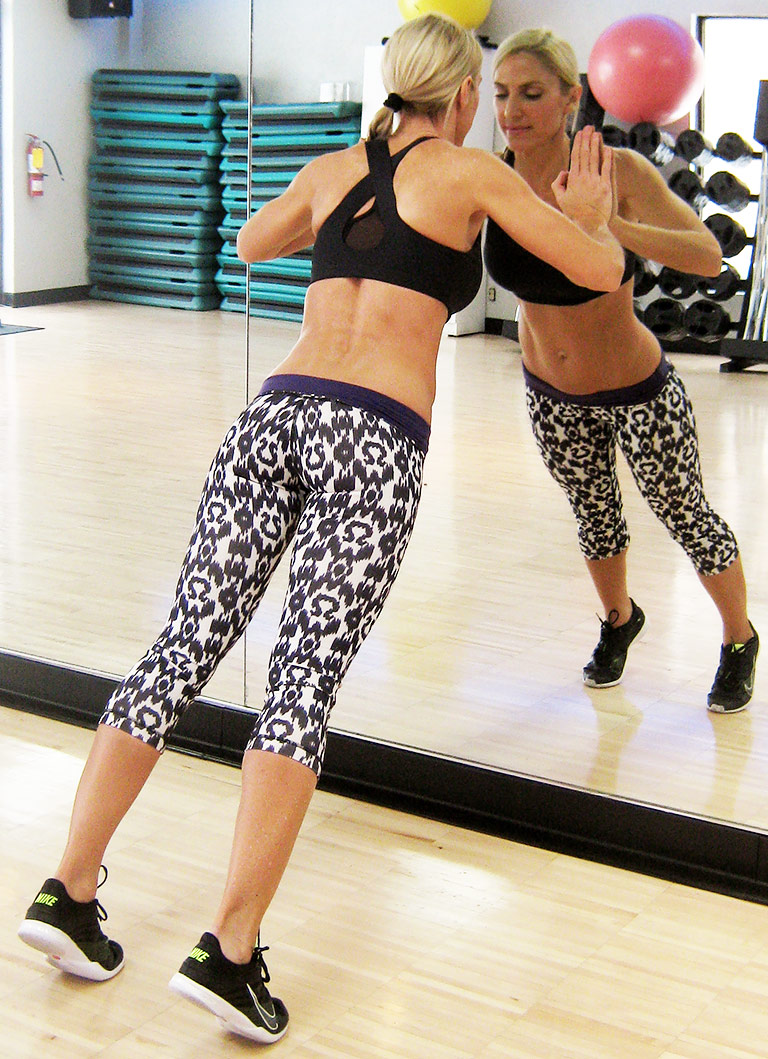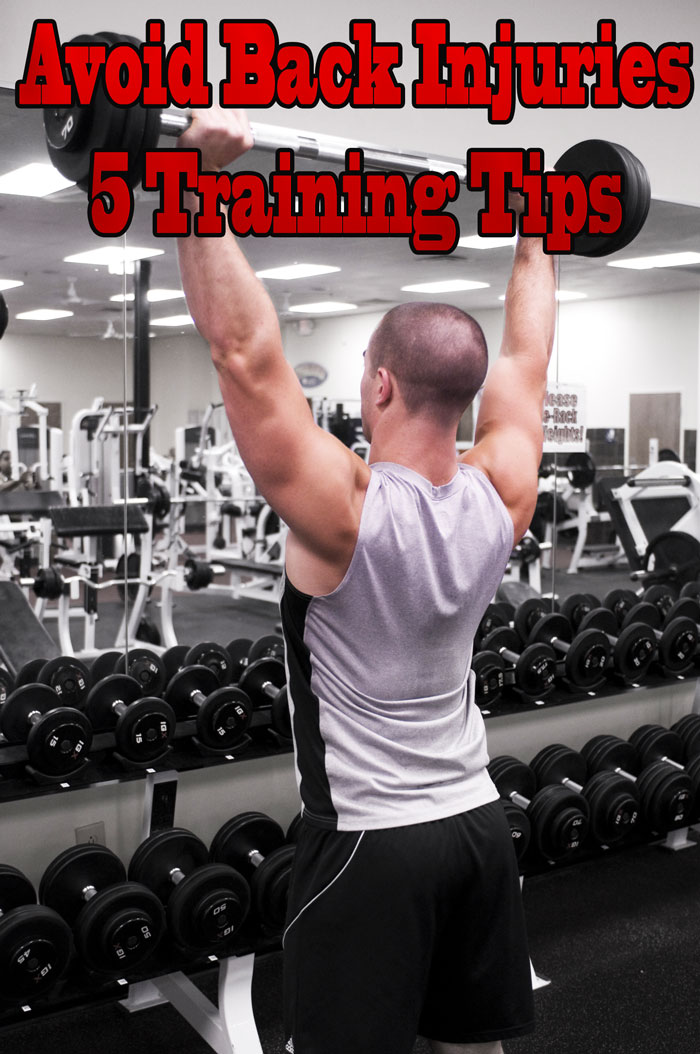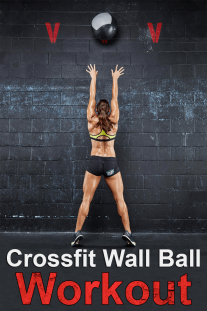
Bodyweight exercises are exercises that utilize your body weight instead of equipment like dumbbells or gym machines. Using bodyweight was one of the original forms of strength training. Bodyweight training is easy to learn, effective, and can be done pretty much anywhere; at home, at work or while traveling – much like a portable gym.
Although you can get quite inventive when it comes to bodyweight exercises, the following 10 bodyweight exercises are great ways to work for all the major muscle groups.
Many, like the squat, are compound exercises that work for more than one muscle group.
What are Bodyweight Exercises?
It may seem obvious to seasoned gym trainers or athletes, but many forms of resistance and related exercise regimens at times utilize an individual’s own body weight. Programs such as yoga, Pilates, calisthenics and plyometrics all use bodyweight to enhance strength, muscle, flexibility and fitness at some level. In the context here, bodyweight exercises use a recognizable strength and resistance training model of concentric, eccentric and isometric exercise to achieve the fitness and strength targets.
The following 10 exercises form the core of the bodyweight workout program. Many other variations and modifications are also possible.
1. The Push-Up
The push-up is a classic bodyweight exercise, and it demonstrates quite clearly the principle of bodyweight resistance training.
While facing the floor and propped up on hands and toes, push the body to and from the floor.
One “up-and-down” is one push-up repetition. Don’t go too fast or too slow. Keep the head and neck steady. Do as many as you can in one minute; rest, then try again. Rest your knees on the ground if you find the exercise difficult when you first start out.
2. The Squat

The squat without weights may seem easy, but once you get up to around the 15-rep mark it starts to take a toll on the knees, upper legs, and butt until you build up some condition. The squat develops legs and butt muscles and, over time, may strengthen knee joints. However, be cautious with this exercise if you have an existing knee injury or feel knee pain at any stage during the workout.
3. The Lunge
The lunge is a fundamental bodyweight exercise. Done in sets of eight or more (each leg), lunges provide strength, balance, and flexibility training. Options include a variety of arm positions for the lunge – at the sides, straight out in front, raised on each side, crossed at the chest or straight up overhead. For example, the arms raised at the sides provides better balance and stability than arms crossed at the chest.
Other more advanced options include the backward lunge and the 45-degree angle side lunge.
4. The Crunch
Crunches are a popular exercise for strengthening the abdominal muscles. Many different types of crunches exist.
Some of the best types of crunches include:
- Standard crunch, in which the shoulders are raised off the floor while you contract the abs.
- Reverse crunch, in which the legs and knees are raised off the floor while you contract the abs.
- Combo crunch, which is a combination of both of the above.
- Bicycle crunch, which includes all of the above and you peddle your legs in the air.
5. The Dip
Dips are performed with a chair or bench. You push up from a chair with arms behind and legs out front. You can also use a special machine at the gym that makes it easier. These are called “assisted dips.”
For bench dips, you can start out with the legs bent at about 90 degrees and your feet more or less flat on the floor. Then, extend them out as you get stronger until you’re “dipping” on your heels with your feet stretched out in front.
6. The Pull-Up and Chin-Up
These exercises are variations of the one movement in which you haul yourself up off the ground so that your face is more or less level with a high bar.
Pull-ups and chin-ups are difficult exercises for many. Although pull-ups or chin-ups are good examples of bodyweight exercises, you may not have access to a pull-up bar at home. Most gyms have a pull-up bar, and you can improvise at home with a beam or bar meant for other things. Just make sure that it is solid and secure.
7. The Wall Squat
Stand against a wall and slowly bend the knees while supporting your back with the wall. Hold the position with your thighs parallel to the floor for 10 seconds, then return to the standing position.
8. The Wall Push

Stand facing a solid wall, raise your arms and push hard against the wall for 10 seconds. Relax and repeat three times. This is an “isometric” exercise.
9. The Bridge
The bridge exercise has you on your back and pushing up with the legs while maintaining balance with arms flat on the floor.
10. The Chair Stand
Sit on a chair that is braced against a wall. Sit and stand 10 times then rest. Do three sets.
These 10 bodyweight exercises will build good strength in a fitness program. You can do most of them at just about any time and any place, and additional equipment is not necessary. For complete fitness, add in some running or fast walking, or even interval training as well.




Leave a Reply